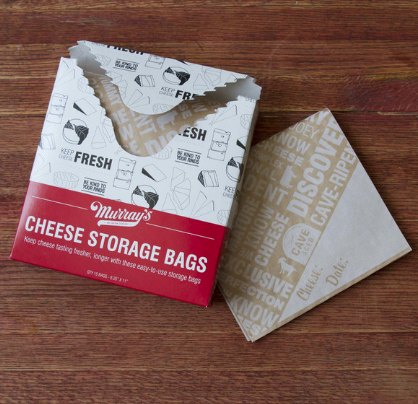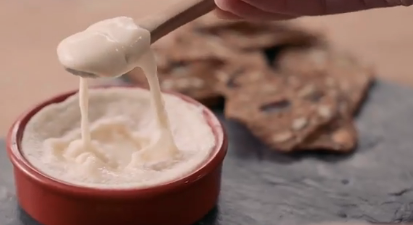By Eric Schaum, Murray’s Marketing + Customer Experience

Summer’s here, and it’s one of the hottest times to enjoy cheese. The heat brings a host of challenges to cheese-lovers, from transportation to storage. Still, it’s not like we’re going to just wait for the colder months before we can enjoy our favorite food again! I’ve worked in Murray’s Cheese for three years in various roles, and I’m breaking down some of the most common questions people ask about enjoying cheese during the warm weather.
What are some of the most popular summer cheeses?
Fresh cheeses tend to be the most popular in the summer. Chevres, burrata, feta, and similar cheeses that pair nicely with a refreshing salad. You also see a jump in good melting cheeses like raclette and alpines for grilling season.
Are there any cheeses to avoid in the hot weather?

In my opinion, no. With the right care even the most delicate cheese can be enjoyed on the hottest day of the summer. That being said, fresher cheeses that are young and spreadable will spoil much easier than firmer more aged cheeses. If you are going on a backpacking trip or will need to transport cheese for a long time out of refrigeration then you should stick with harder cheeses like aged cheddars, goudas, or Parmiggiano Reggiano. These cheeses still need some refrigeration but can go much longer without it.
Why do harder cheeses last longer?
I checked in with our Cavemaster PJ to get the science scoop on this one: “Harder cheeses last longer due to moisture content and water activity,” he says. “Enzymatic and microbial activity happens faster when there is more available water. Softer cheese is holding onto more water within the protein structure of the cheese. As cheese ages, enzymes start to break down the protein structure, and softer cheeses have a tougher time holding the water within the structure. Eventually, they turn into a puddle that very few people want to eat.”

How can I tell if my cheese is spoiled?
Most of the time, cheese spoilage will be hard to miss. The most common sign is a bitter, ammoniated smell or flavor. Many folks believe if cheese develops mold then it must immediately be thrown out. While this is true for softer cheeses like ricotta, mold cannot pierce deeply into non-spreadable cheeses. You can remove mold from those cheeses with a knife or even a damp towel. You can find tutorials on Youtube or Google if you are unsure of how to proceed. If you are seeing something that makes you feel that the cheese has spoiled, take photos and reach out to our Customer Experience team for further assistance!
What’s the best way to store cheeses so they keep longer?

Cheese is best stored in the bottom drawer or vegetable crisper in your fridge. Cheese paper is generally considered to be the best thing to wrap cheese in (butcher paper, wax paper, or something similar also works). This will not prevent mold growth the way vacuum sealing does but doesn’t run the risk dulling the flavor of the cheese or making it taste “plastic-y”. Just check the cheese regularly and cut away any mold that grows. In general, it’s better to buy small amounts of cheese for when you need it rather than trying to make a lot last a long time.
What cheeses would you recommend for a summer cheese board?
Any of the top summer cheeses mentioned above will do, but to go more in detail, I generally try to provide as much variety as possible when I make a cheese board. If possible, I want each cheese to have a different milk type, state/country of origin, and texture. Here are some go-to options of mine:

- Murray’s St. Mark’s: Almost like a crock of melty, cultured butter. So tasty, and it has beautiful presentation with the simple ceramic container (which I have re-used for multiple summer craft projects).
- Murray’s Honey Goat Gouda: Don’t go with this one if you’re hoping to have leftovers. Hits the spot for almost everyone with its approachable, sweet, nutty notes. Very versatile and can be crumbled into a salad or melted in a sandwich.
- Murray’s 1 Year Manchego: Another crowd-pleaser, Manchego is the perfect gateway to sheep-milk cheeses. Sheep milk is incredibly high in butterfat and that richness is imparted into this cheese. Aged long enough to develop crunchy crystals and the basket weave pattern on the rind make this a must-have for cheeseboards.
Want more summer cheese inspiration? Check out our selection of ready-to-make cheese boards here!
